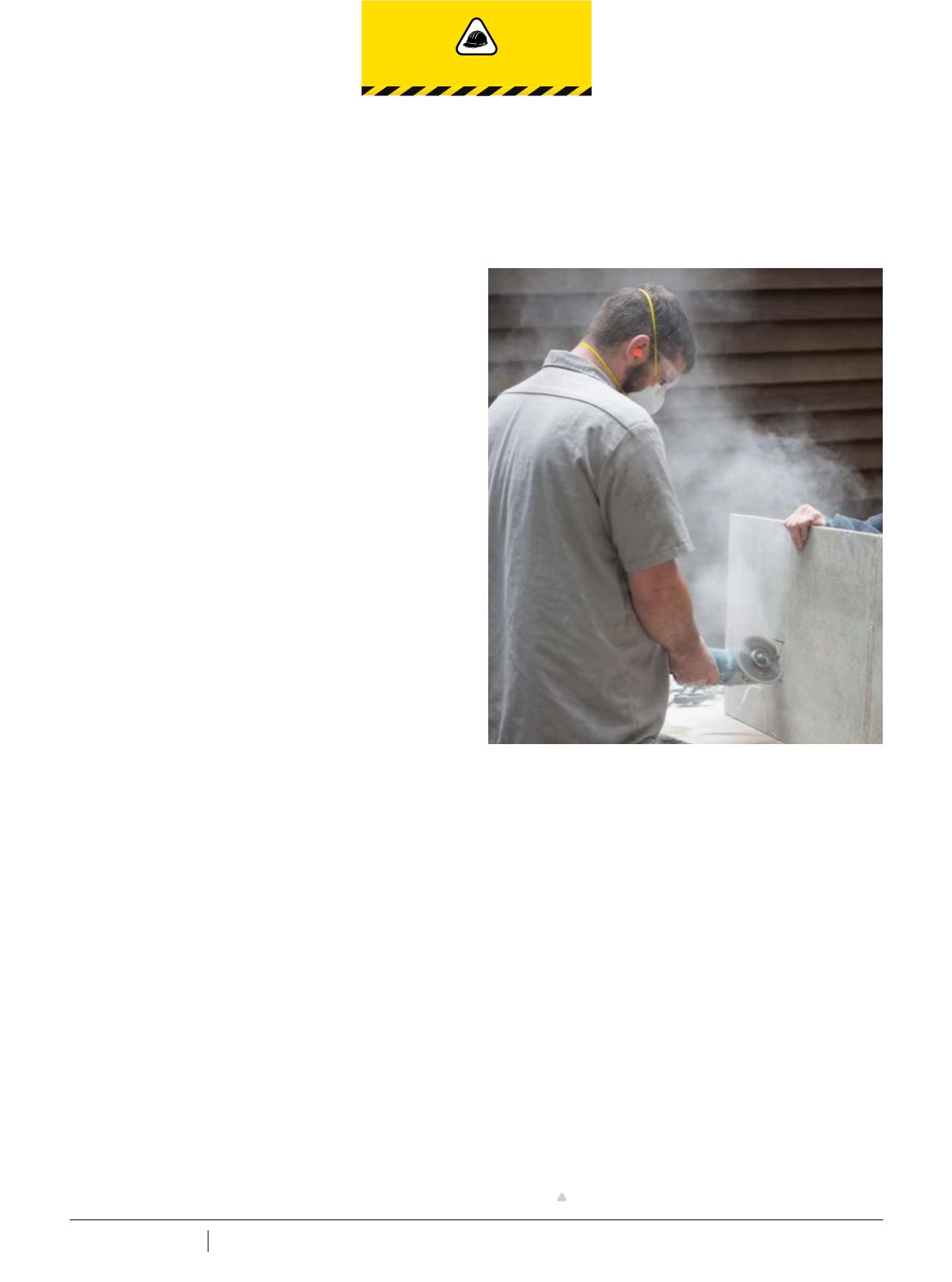

74
ACROSS THE TRADES Winter 2022
DAMPENING THE SILICA ISSUE
RESPIRABLE CRYSTALLINE SILICA (RCS) IS A MAJOR ISSUE IN THE BUILDING AND CONSTRUCTION INDUSTRY.
SEAN CARROLL
WRITES ABOUT WHAT ARTIBUS IS DOING TO TACKLE THE ISSUE ACROSS THE COUNTRY.
S
ilica, or more specifically, silica dust is a known hazard
that comes from some stone, rock, sand, gravel and clay.
It can be found when manipulating several common
materials like bricks, tiles, concrete and some plastic material.
Because of where it comes from, it’s critical for building and
construction workers to know about the risks associated with
it and steps to prevent the release of respirable crystalline
silica or silica dust.
Workers in engineered stone benchtop manufacturing,
finishing and installation are at particular risk, as this
comparatively new material contains up to 95% crystalline
silica, as distinct from natural stone’s crystalline silica
composition of 5%-50%.
The results are deadly as silica dust can lead to lung cancer,
silicosis, chronic obstructive pulmonary disease and kidney
disease. All states and territories across Australia have work
health and safety laws that explain duty of care for employers
and workers’ responsibilities.
Despite the abundance of caution and laws surrounding the
prevention of silica dust, it’s estimated that 230 Australians a
year develop lung cancer due to past exposure.
“In recent years, there have been stories around accelerated
cases of silicosis and lot of that has been emanating from
engineering, manufacturing and the energy industry,” Artibus
Innovation senior project officer Charles Donnelly says.
Artibus Innovation is a skills service organisation assisting
the National Construction Industry to develop training standards
around silica dust safety. These will be submitted to the
Australian Industry Skills Committee (AISC) for approval to Skills
Minsters and form part of the national construction training
package used by training organisations across Australia.
“After a growing number of cases, SafeWork NSW approached
the AISC and recommended that construction training packages
include dedicated training components around silica safety
because, at the moment, there are no units of competency in the
national training package that reference silica, although a number
of them do contain awareness of hazards, including silica.”
As of late 2021, the silica project has progressed through the
consultation process. It will produce four units of competency,
focused on knowledge, safe handling and risk management for
new entrants through to supervisors.
In Safe Work Australia’s guidelines for removing silica dust
in work, it says that companies can eliminate silica dust at the
source by eliminating the processes that generate dust.
For example:
∫
Adopting production processes that generate less dust - for
example any wet method is likely to generate less dust than
a dry one;
∫
Treating the dust at the point of generation, as this is more
effective than capturing airborne dust; and
∫
Treating the dust on its transmission path using dust
suppression techniques - for example water sprays,
chemical additives, local exhaust ventilation (LEV),
vacuum. If it is reasonably practicable, eliminate the silica
containing products from your workplace.
“Silica poses a very serious risk when it’s being worked with
in ways that are unsafe, especially with products that contain
higher concentrations of respirable crystalline silica like
engineered stone,” Charles explains.
“We’re seeing businesses conducting safer work practices
around silica and doing the right thing with regard to wet
cutting and wearing the appropriate respiratory protective
equipment and this awareness just wasn’t there 20 years ago.”
He adds that while the industry has come a long way,
there is still work to be done in terms of hazard awareness
and making sure that we eliminate silica-related deaths in
Australia.
It’s estimated that around 230 Australians a year
develop lung cancer due to past exposure to silica.
SAFETY
















